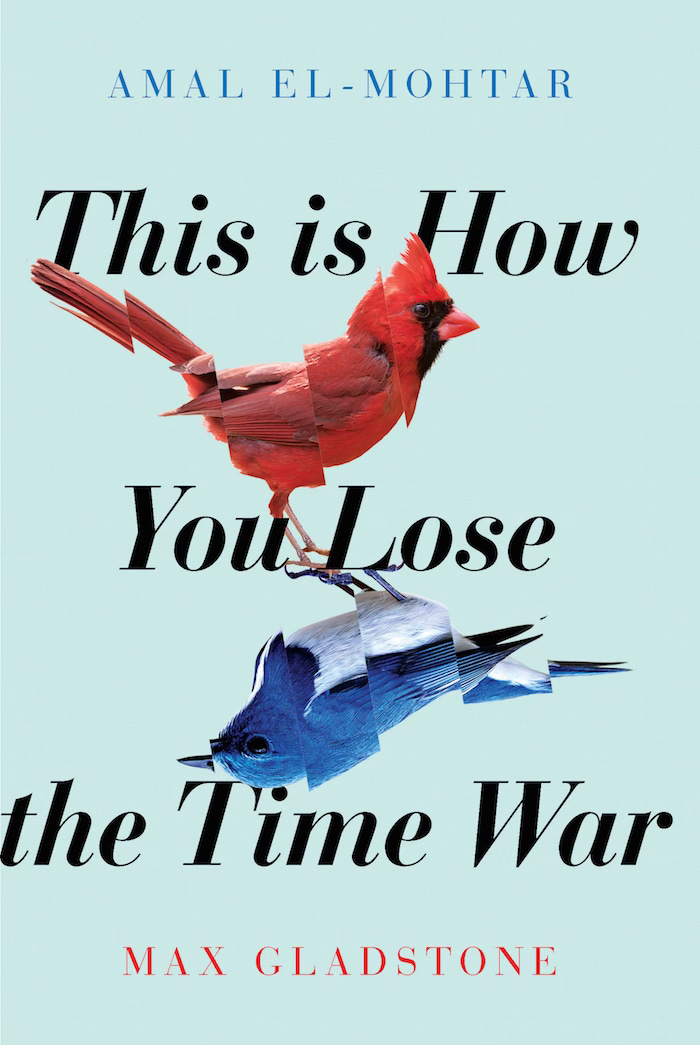Today, I'm exploring one of the most unique and talked-about science fiction novellas of recent years: This Is How You Lose the Time War by Amal El-Mohtar and Max Gladstone. Let me start by saying, I’m a sucker for quippy banter. I eat it up. Every. Single. Time. I found this book to be so clever I tabbed almost every other page. This collab has swept awards and divided readers in equal measure. It's a book that defies easy categorization—part epistolary romance, part time-travel thriller, part prose poem.
War, Time, and Unlikely Romance
This Is How You Lose the Time War follows Red and Blue, agents from opposing factions in a war fought across multiple timelines and realities. Red serves the Agency, masters of technology and mechanical precision. Blue fights for the Garden, champions of organic growth and biological mastery. As they pursue each other through various historical moments—ancient Babylon, World War I battlefields, distant futures—their professional rivalry transforms into something unexpected: correspondence, understanding, and eventually love.
The novella's greatest strength lies in its absolutely gorgeous prose. El-Mohtar and Gladstone have crafted something that reads like poetry disguised as science fiction. Each letter between Red and Blue crackles with wit, longing, and linguistic inventiveness. The authors create distinct voices for their protagonists while maintaining a shared lyrical sensibility that makes the collaboration seamless. If I’m not mistaken, I believe they outlined together but only shared the letter portions of the story with each other after they had finished writing; which may be why it feels so genuine.
The epistolary format proves perfectly suited to the material. Since Red and Blue can only communicate through hidden messages—embedded in tree rings, carved in ancient stones, encoded in historical events—their relationship develops through pure language and imagination. This constraint forces the authors to convey character development, world-building, and emotional growth entirely through correspondence, creating an intimacy that's remarkably effective.
Where the novella excels is in its conception of time travel and multidimensional warfare. Rather than getting bogged down in mechanical explanations, El-Mohtar and Gladstone treat temporal manipulation as both art and poetry. Their agents don't just travel through time—they sculpt it, leaving subtle changes that ripple through history in pursuit of their factions' incomprehensible goals.
However, the book's experimental nature may frustrate readers seeking traditional narrative structure. The plot remains deliberately opaque—we never fully understand what Red and Blue's factions are fighting over, or why their war matters. Character backgrounds remain sketchy, and the world-building prioritizes atmosphere over explanation. Some readers will find this mysterious approach engaging; others may feel lost without clearer anchoring details.
The pacing can also feel uneven. While the correspondence sections shine with emotional intensity, the action sequences feel less developed, almost perfunctory compared to the letters' poetic weight. But it’s not about that..
Despite these potential barriers, This Is How You Lose the Time War succeeds brilliantly as an experiment in form and feeling. It's science fiction as love song. It’s time travel as metaphor. The prose may not feel super compelling to those who regularly read well-written poetry but casual readers and genre-fiction enthusiasts are almost guaranteed to have a good time.
For its linguistic beauty, bold structure, and refreshing wit, I give it 4.8/5 stars.
Spoiler Section
No spoilers today just read it. It barely clocks in at 200 pages and is a great afternoon/weekend read. I would recommend this as an introduction to the sci-fi genre per se but it a great choice for people who want to dabble in something that is beautifully written and low commitment.






I’ve been wanting to read this for a while and your review convinced me!